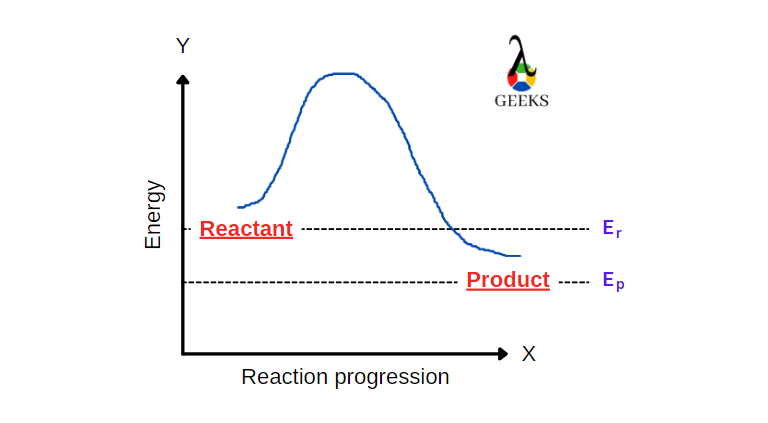Strontium hydroxide is an caustic compound composed of strontium and hydroxide ions. Let us see how it reacts with hydrogen fluoride through this article.
Strontium hydroxide [Sr(OH)2] reacts with hydrofluoric acid to form salt and release water. Sr(OH)2 exits in three states that are anhydrous, monohydrate and octahydrate. Hydrofluoric acid (HF) is a strong acid industrially used as a source of fluorine. HF is used widely in petrochemical industries.
We will discuss key facts about HF + Sr(OH)2 reaction, like redox reaction, balanced chemical equation, net ionic equation and conjugate pairs in this article.
What is the product of HF and Sr(OH)2
Strontiofluorite (SrF2) and water (H2O) are the products of the HF + Sr(OH)2 reaction. The chemical equation for HF + Sr(OH)2 reaction is,
HF + Sr(OH)2 = SrF2 + H2O
What type of reaction is HF + Sr(OH)2
HF + Sr(OH)2 is an acid-base reaction in which HF and Sr(OH)2 neutralize each other to form salt and water.
How to balance HF + Sr(OH)2
The balanced chemical equation for HF + Sr(OH)2 reaction is,
2HF + Sr(OH)2 = SrF2 + 2H2O
- The unbalanced general chemical equation for HF + Sr(OH)2 reaction is,
- HF + Sr(OH)2 = SrF2 + H2O
- To count if the number of moles of reactants and products is equal are not. Here the number of hydrogen, oxygen and fluorine atoms is not balanced.
- Therefore, we multiply the HF and H2O molecules by the coefficient of 2 to get the balanced chemical equation.
- 2HF + Sr(OH)2 = SrF2 + 2H2O
HF + Sr(OH)2 titration
Titration between HF and Sr(OH)2 can be categorized as acid-base titration.
Apparatus Used:
Burette, funnel, pipette, burette stand, measuring cylinder and beaker.
Indicator:
Phenolphthalein is used as the indicator.
Procedure:
- Wash, rinse and then fill the burette with a standardised solution of Sr(OH)2.
- Pipette out 10mL of HF in a conical flask and add 2-3 drops of phenolphthalein indicator.
- The colour of the HF + Sr(OH)2 solution in the conical flask will change to light pink at the endpoint.
- Note the reading of the burette and repeat the experiment for concurrent readings.
- The concentration of HF can be found using the formula SHF VHF = SSr(OH)2 VSr(OH)2.
HF + Sr(OH)2 net ionic equation
The net ionic equation for HF + Sr(OH)2 reaction is,
HF (aq.) + Sr2+ (aq.) + OH– (aq.) = SrF2 (s) + H2O (l)
- The balanced chemical equation for HF + Sr(OH)2 reaction is,
- 2HF + Sr(OH)2 = SrF2 + 2H2O
- Denote the chemical states (S, l, g or aq) of each compound involved in the reaction.
- 2HF (aq.) + Sr(OH)2 (aq.) = SrF2 (s) + 2H2O (l)
- Split the strong electrolytes to obtain the total ionic equation.
- HF (aq.) + Sr2+ (aq.) + OH– (aq.) = SrF2 (s) + H2O (l)
- Cancel out the spectator ions, if any, to obtain the net ionic equation.
- HF (aq.) + Sr2+ (aq.) + OH– (aq.) = SrF2 (s) + H2O (l)
HF + Sr(OH)2 conjugate pairs
HF + Sr(OH)2 collectively do not have any conjugate pair.
- The conjugate pair of H2O is its conjugate base OH–.
HF and Sr(OH)2 intermolecular forces
- The intermolecular force in HF molecules is dipole-dipole interaction.
- Ionic force is present in Sr(OH)2 molecules.
- Hydrogen bonding, London dispersion force and dipole-dipole interaction are present in H2O molecules.
HF + Sr(OH)2 reaction enthalpy
HF + Sr(OH)2 reaction enthalpy is -167.46 kJ/mol. The standard enthalpy for the formation of compounds involved in the reaction is:
| Molecules | Enthalpy in formation (in kJ/mol) |
|---|---|
| HF | -332.36 |
| Sr(OH)2 | -963.88 |
| H2O | -285.83 |
| SrF2 | -1224.4 |
Reaction Enthalpy ΔHf = Standard enthalpy of products – Standard enthalpy of reactants
Thus, ΔHf = (-285.83 – 1224.4) – (-963.88 – 332.36)
ΔHf = -167.46 kJ/mol.
Is HF + Sr(OH)2 a buffer solution
HF + Sr(OH)2 is not a buffer solution because both HF and Sr(OH)2 are strong acids and bases, respectively, but there must be present a weak acid or weak base for the preparation of buffer solution.
Is HF + Sr(OH)2 a complete reaction
HF + Sr(OH)2 reaction is a complete reaction and no further steps can be performed.
Is HF + Sr(OH)2 an exothermic or endothermic reaction
HF + Sr(OH)2 reaction is an exothermic reaction as the enthalpy of the reaction has a negative value for the chemical equation.

Is HF + Sr(OH)2 a redox reaction
HF + Sr(OH)2 reaction is not a redox reaction, as the oxidation states of each atom are unchanged throughout the reaction.
Is HF + Sr(OH)2 a precipitation reaction
HF + Sr(OH)2 reaction is a precipitation reaction and solid SrF2 is obtained at the product side of the equation.
Is HF + Sr(OH)2 reversible or irreversible reaction
HF + Sr(OH)2 reaction is an irreversible reaction because the SrF2 formed does not dissolve back to give the reactants back and also, the reaction path is only one way.
Is HF + Sr(OH)2 displacement reaction
HF + Sr(OH)2 reaction is a double displacement reaction in which H and Sr atoms displace each other from their respective compounds to form different products.
Conclusion:
The article concludes that HF and Sr(OH)2 are strong acids and bases but HF is not a strong electrolyte and does not ionize in an aqueous solution. HF is also important from an industrial point of view for obtaining fluorine.

Hi, I am Sahil Singh. I completed my graduation in Bachelor of Science. I always have keen interest in Physics & Chemistry. I worked on my own blog for 1 year in the technology and gaming niche. I try my best to provide valuable knowledge through my articles.
You can reach out to me on LinkedIn: